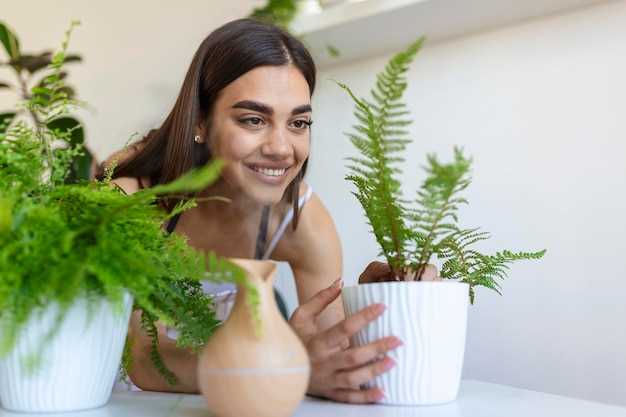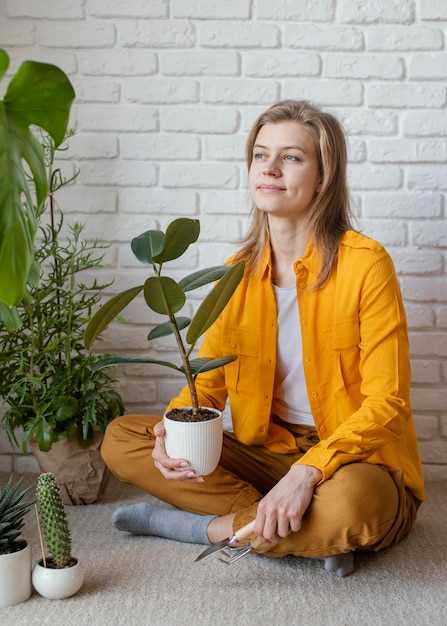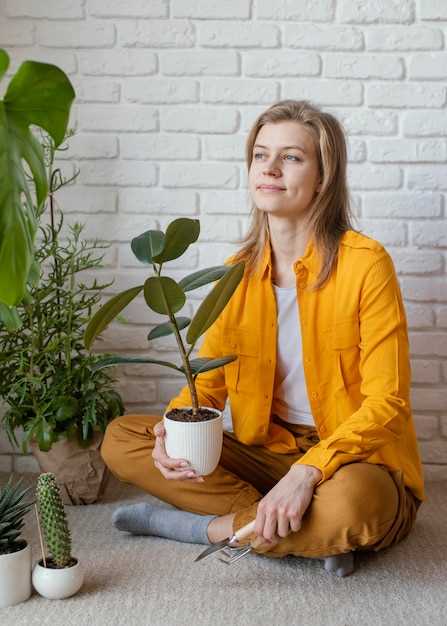Creating a vibrant atmosphere can transform the way we feel. Imagine a sanctuary filled with life, where each breath invigorates the senses. Plants possess a unique ability to bring nature indoors, enhancing our well-being. They are more than just decor; they serve as companions. Greenery adds warmth and character, making any area feel inviting and refreshing.
Consider the significance of choosing the right varieties. Some thrive in bright light, while others prefer shade. Each type contributes differently to the environment, influencing air quality and emotions. It’s fascinating how specific species can affect our mood and energy levels. As we navigate through the diverse options, it becomes clear that both aesthetics and benefits play crucial roles in our selections.
Integrating flora into daily life opens up endless possibilities for improvement. One can experience reduced stress, enhanced concentration, and an overall uplift in spirits simply by surrounding oneself with these natural wonders. As spaces breathe life through their presence, the simple act of caring for them fosters a deeper connection to nature.
From the lush leaves of ferns to the charming elegance of succulents, each brings its own style. The choice of greenery can reflect personal taste and creativity. Such selections provide an opportunity to express individuality while nurturing an atmosphere of tranquility. Consider how live decorations can harmonize with your unique living environment, perfectly complementing furniture and decor.
Enhance Your Home: Indoor Plants and Design

Integrating greenery into living spaces can transform the entire atmosphere. A touch of nature brings vibrancy and warmth. These natural elements have the power to uplift moods and purify the air. They serve more than just an aesthetic purpose. Consider how they can blend with various design styles.
Choosing the right greens requires some thought. Think about lighting conditions and maintenance. Explore different shapes, sizes, and colors. Each species contributes its own unique charm and personality. Additionally, they can create focal points or enhance existing decor.
For instance, a tall fiddle leaf fig can elevate a corner. Succulents in stylish pots add character to shelves. A cascading pothos can soften a rigid surface, bringing life to a room. Not only do these additions purify the air, but they also create a sense of tranquility. Incorporating plants into your living space allows for endless creativity and individual expression.
Experimenting with various arrangements is part of the fun. Layering plants at different heights can create visual interest. Grouping them in clusters hones in on specific areas, drawing the eye. Using textured pots and planters introduces additional layers to the design. This interplay between plant life and decor elements results in a harmonious environment.
Ultimately, it’s about finding the right balance between nature and design. Consider how each selection interacts with other elements in the room. Plants can soften hard lines or complement sleek finishes. With thoughtful integration, these green companions become essential partners in crafting a welcoming space.
Choosing the Right Indoor Plants

Selecting the perfect greenery for your personal space can feel overwhelming. The variety of options available makes the process both exciting and challenging. Each species holds unique qualities and benefits, contributing not only to aesthetics but also to well-being. Understanding the specific requirements of different varieties is crucial.
Various factors influence the choice of suitable species. Consider lighting conditions in your space, as some thrive in bright areas, while others prefer shade. Additionally, think about the maintenance level you’re prepared to handle; some require less attention than others. Placement and size also play significant roles.
Moreover, personal preferences greatly affect the decision-making process. A particular species might evoke a positive emotion or memory, creating a connection that influences your choice. Do you desire air-purifying qualities? Or perhaps you yearn for vibrant, decorative foliage? Your ultimate selection should reflect your lifestyle and individual tastes.
Combining different types can create a dynamic and captivating atmosphere, allowing you to express your unique style while simultaneously enjoying the numerous advantages brought by nature’s wonders.
Benefits of Indoor Greenery
Bringing nature indoors offers a plethora of advantages. It creates a soothing atmosphere that promotes relaxation. Vibrant colors and varied textures can uplift the spirit. Additionally, these living elements contribute to a pleasant environment. Indoor greenery can significantly affect mood and productivity.
Furthermore, plants play a crucial role in enhancing air quality and removing toxins, making spaces feel fresher and purer. Studies have shown that being surrounded by foliage can reduce stress and anxiety levels.
They not only provide aesthetic appeal, but they can also improve focus and concentration. Adding greenery can transform any space into a tranquil retreat, encouraging creativity and inspiration. Overall, integrating these organic companions into daily life proves to be beneficial for both the mind and the body.
Low-Maintenance Options for Busy Lives
In today’s fast-paced world, time is often a luxury. Finding ways to incorporate greenery can seem daunting. Fortunately, there are options that require minimal upkeep. These choices are perfect for those juggling multiple commitments while still craving a touch of nature. They thrive with little attention, making them ideal companions in any living space. Focusing on simple care needs allows for enjoyment without the stress of constant maintenance.
Succulents are a fantastic choice. They not only look stunning but also conserve water effectively. With a variety of shapes and colors, they can fit any aesthetic. Just a little sunlight and infrequent watering are all they need. On the other hand, consider snake plants. These hardy specimens tolerate low light and drought. Remarkably, they can even improve air quality while requiring little effort in return.
Another excellent option is the ZZ plant. It thrives in indirect light and doesn’t require frequent watering, making it a resilient choice. For those who desire something fragrant, pothos can provide lovely greenery with the added bonus of staying vibrant with simple care. Each of these choices not only adds beauty to your environment but also enhances the overall atmosphere with ease.
By choosing plants that flourish with minimal care, you can effortlessly bring life into your surroundings. Whether you’re at work or taking a well-deserved break, these companions will thrive without much intervention. They provide aesthetic pleasure and tangible benefits, all while fitting seamlessly into a busy lifestyle.
Best Plants for Air Quality Improvement
Breathing clean air is essential for well-being. Many types of greenery significantly contribute to purifying the environment. Not only can they enhance aesthetics, but they also serve a functional purpose. These marvelous organisms work tirelessly, absorbing toxins while releasing oxygen. Incorporating specific species into your surroundings can transform the air quality remarkably.
Consider the powerful spider plant. It’s known for its resilience and adaptability. This easy-to-care-for option effectively removes pollutants such as formaldehyde and xylene. Moreover, peace lilies add elegance while combating ammonia and benzene. Their beautiful blooms are a stunning addition, bringing both charm and utility.
Moreover, pothos stands out for its air-cleaning prowess. It excels at filtering out common airborne toxins. Not to be overlooked, the snake plant offers a unique benefit: it converts carbon dioxide into oxygen at night, making it perfect for bedrooms. In addition, the rubber plant is another favorite among decorators, thanks to its striking leaves and ability to purify the air.
By choosing these remarkable varieties, you not only beautify your surroundings but also promote a healthier living atmosphere. Emphasizing the positive influence greenery can have on both your health and environment creates an inviting space for relaxation and rejuvenation.
Style Tips: Coordinating Plants with Decor
Incorporating greenery into living spaces can create a harmonious atmosphere. The key lies in how these elements interact with existing furnishings and design schemes. Thoughtfully chosen varieties can elevate aesthetics significantly. A plant can act as an eye-catching centerpiece, or complement subtle decor. Balance is essential. Consider size, shape, and color; they all play an integral role.
Use contrasting hues to make your greenery pop. For example, a vibrant fern looks stunning against neutral-toned walls. Conversely, soft pastels pair beautifully with more intricate leaf patterns. Texture is equally important–mix smooth-leaved species with those that have a more rugged surface.
| Design Element | Plant Type | Suggested Color Palette |
|---|---|---|
| Modern Minimalism | Snake Plant | White, Gray, Black |
| Bohemian Vibe | Pothos | Earth Tones, Greens |
| Rustic Charm | Fiddle Leaf Fig | Warm Woods, Deep Greens |
| Eden Retreat | Peace Lily | Bright Whites, Fresh Greens |
Incorporate various heights and layers to create visual interest. Tall plants can draw the eye upward, making a space feel larger. Hanging varieties add dimension and whimsy. Group smaller pots together for an inviting, casual look as well. The placement of these botanicals can dramatically alter how a room feels. Whether it’s a solitary specimen or a lush arrangement, aim for a cohesive yet dynamic display.
Creating Atmospheric Interior Spaces

Transforming a living area into a cozy retreat involves more than just furniture choice. It’s about evoking feelings of comfort and tranquility. The right elements can create a sanctuary from the outside world. Attention to detail plays a crucial role in this process. Lighting, colors, and textures come together to set the mood.
Imagine a space suffused with warmth and inviting energy. Incorporating greenery introduces life into the environment, enhancing its vibrancy. Soft fabrics and varied materials add richness, creating a delightful contrast. Natural light dances on surfaces, casting playful shadows. The overall ambiance resonates with a sense of peace and wellness.
Selecting the right accessories can elevate a room’s character significantly. Unique decor pieces tell a story, making the space feel personal. Consider layering different textures to achieve visual interest. Incorporating elements like candles or artwork invites a touch of personality. Overall, every choice contributes to a harmonious and stylish atmosphere.
Focusing on these aspects enables anyone to craft a warm, inviting environment. It’s about balancing function with aesthetic appeal, making every corner feel intentional. Each element, from the smallest trinket to the largest piece of furniture, serves a purpose. This thoughtful approach yields a result that is both beautiful and restorative.
Current Trends in Home Decor
Interior design is constantly evolving, reflecting cultural shifts and personal preferences. Each season brings new ideas that invigorate spaces. From bold colors to minimalistic approaches, there is something for everyone. The fusion of functionality and aesthetics has become increasingly important. Home decor is no longer just about looks; it’s a lifestyle statement.
Many individuals are gravitating towards sustainable materials and eco-friendly choices. Incorporating natural elements is a strong trend that harmonizes environments. Biophilic design has gained momentum, encouraging homeowners to connect with nature in creative ways. Besides, vintage pieces are making a comeback, adding character and history to modern settings.
- Neutral palettes combined with vibrant accents.
- Multi-functional furniture that saves space.
- Textured fabrics for visual interest.
- Smart technology integration for convenience.
As we look at the trend towards personalization, it becomes clear that no two spaces are alike; each reflects distinct stories, experiences, and aspirations, illustrating how individual tastes can transform a living area into a personal sanctuary.
Mixing Textures and Colors for Impact
Creating a dynamic atmosphere within your living space requires a thoughtful approach to combining various elements. Different textures can evoke distinct emotions, while colors can set the mood. A cohesive yet diverse palette can transform any area. Consider how vibrancy and softness interact with one another.
Utilizing a mix of materials is crucial. Smooth ceramics paired with rough jute create depth. Luxurious velvet cushions complement sleek leather furniture beautifully. When combined effectively, these contrasts prevent monotony and add intrigue.
Choosing the right color combinations can also greatly influence the overall feel. Bright hues can uplift a room, while muted tones can promote relaxation. A well-balanced contrast can be refreshing yet harmonious. Layering different shades can produce a rich visual story that captivates attention.
To achieve memorable aesthetics, experiment with layering textures and colors thoughtfully, ensuring that each distinct element contributes to the overall design narrative rather than overwhelming it.
Incorporating Natural Elements in Design
Bringing the outdoors inside creates a refreshing ambiance. Natural components can transform any space into a serene environment. This approach not only boosts the aesthetic but also contributes to a positive mood. The essence of nature introduces life and vibrancy into rooms. It’s a practical method to achieve harmony and balance in design.
- Natural light enhances mood and wellbeing.
- Organic materials add texture and depth.
- Colors found in nature evoke calm and relaxation.
- Incorporating greenery purifies the air.
To create an engaging living space, consider using a variety of elements like wooden accents, stone finishes, and plenty of plants, as these features can create a stunning contrast against modern, sleek lines, allowing each element to shine while harmoniously connecting with one another to establish a sense of unity and tranquility.
- Choose furniture made from sustainable materials.
- Utilize large windows to maximize exposure to natural light.
- Incorporate earthy tones in your color palette.
- Add decorative stones or pebbles as accents.
The integration of natural inspirations can be as simple as a color scheme drawn from landscapes, utilizing soft greens, browns, and blues that reflect the colors of nature, or it may involve intricate designs that mimic natural formations, creating a seamless connection between the indoor and outdoor worlds.
Video:
12 of The Healthiest Plants To Have In Your House For A Healthy Lifestyle
12 of The Healthiest Plants To Have In Your House For A Healthy Lifestyle by Horizons Health 3,037,169 views 2 years ago 8 minutes, 20 seconds
Q&A:
What are the benefits of having indoor plants in my home?
Indoor plants offer a multitude of benefits that enhance both your well-being and the aesthetic of your living space. Firstly, they improve air quality by filtering out toxins and releasing oxygen, which can lead to better respiratory health. Additionally, plants have been shown to reduce stress levels and enhance mood, contributing to a more positive environment. They can also increase humidity, which can be beneficial for skin and respiratory problems. Beyond health benefits, indoor plants add a touch of nature and color to your home, making it more inviting and stylish.
How do I care for indoor plants to ensure they thrive?
Caring for indoor plants can vary based on the specific type, but there are some general tips that apply. Firstly, ensure your plants receive adequate light according to their needs; some thrive in direct sunlight, while others prefer indirect light or even shade. Watering is crucial—overwatering is a common mistake, so it’s important to check the soil moisture before watering. Additionally, consider fertilizing your plants during their growing season to provide essential nutrients. Lastly, keep an eye out for pests and diseases, and address any issues promptly to keep your plants healthy.
Which indoor plants are best for beginners?
If you’re new to indoor gardening, some plants are particularly forgiving and easy to care for. Snake plants (Sansevieria) are known for their resilience—they can tolerate low light and infrequent watering. Pothos is another great choice, as it thrives in a variety of conditions and can grow in low-light situations. Spider plants are also beginner-friendly and known for their ability to purify air. Lastly, ZZ plants are both hardy and stylish, requiring minimal care. Starting with these easy-to-maintain plants can help you build confidence in your gardening skills.
Do indoor plants really improve mental health?
Yes, numerous studies suggest that indoor plants can significantly improve mental health. Interacting with plants has been shown to reduce stress and anxiety levels, as they create a calming presence in any room. The act of caring for a plant can also provide a sense of purpose and accomplishment, which can be beneficial for mental well-being. Furthermore, being surrounded by greenery has been linked to increased productivity and creativity, making plants an excellent addition to workspaces. Therefore, incorporating indoor plants can be a natural and effective way to boost your overall mental health and mood.


